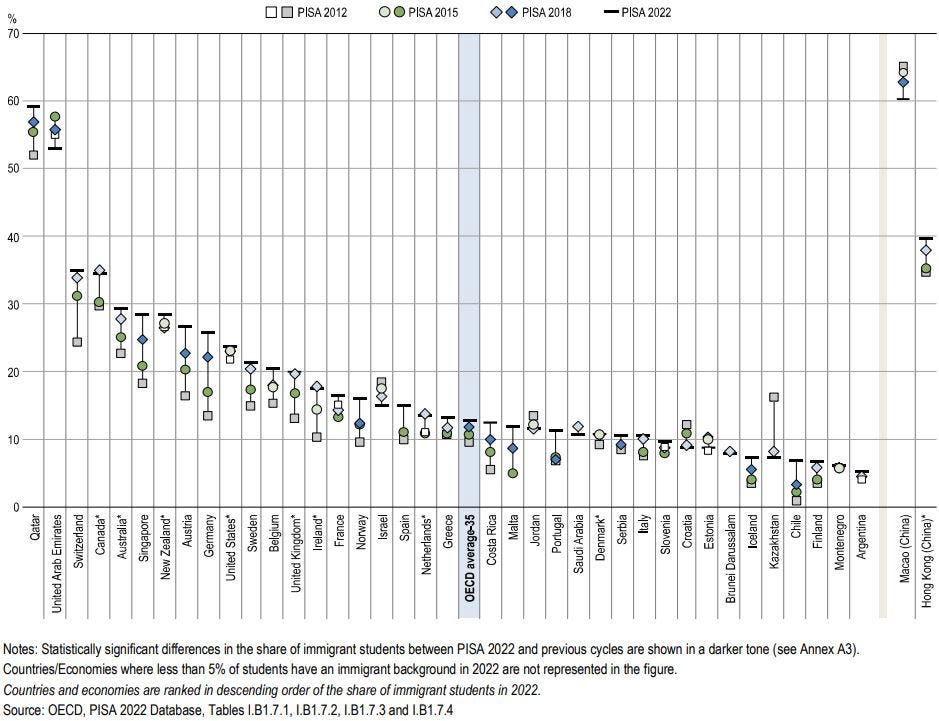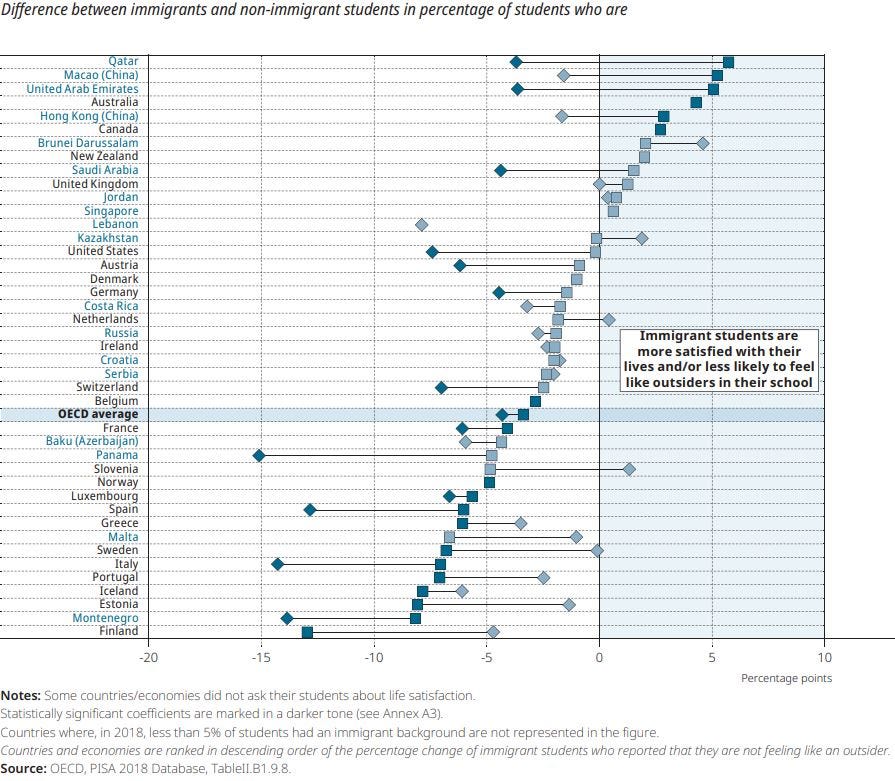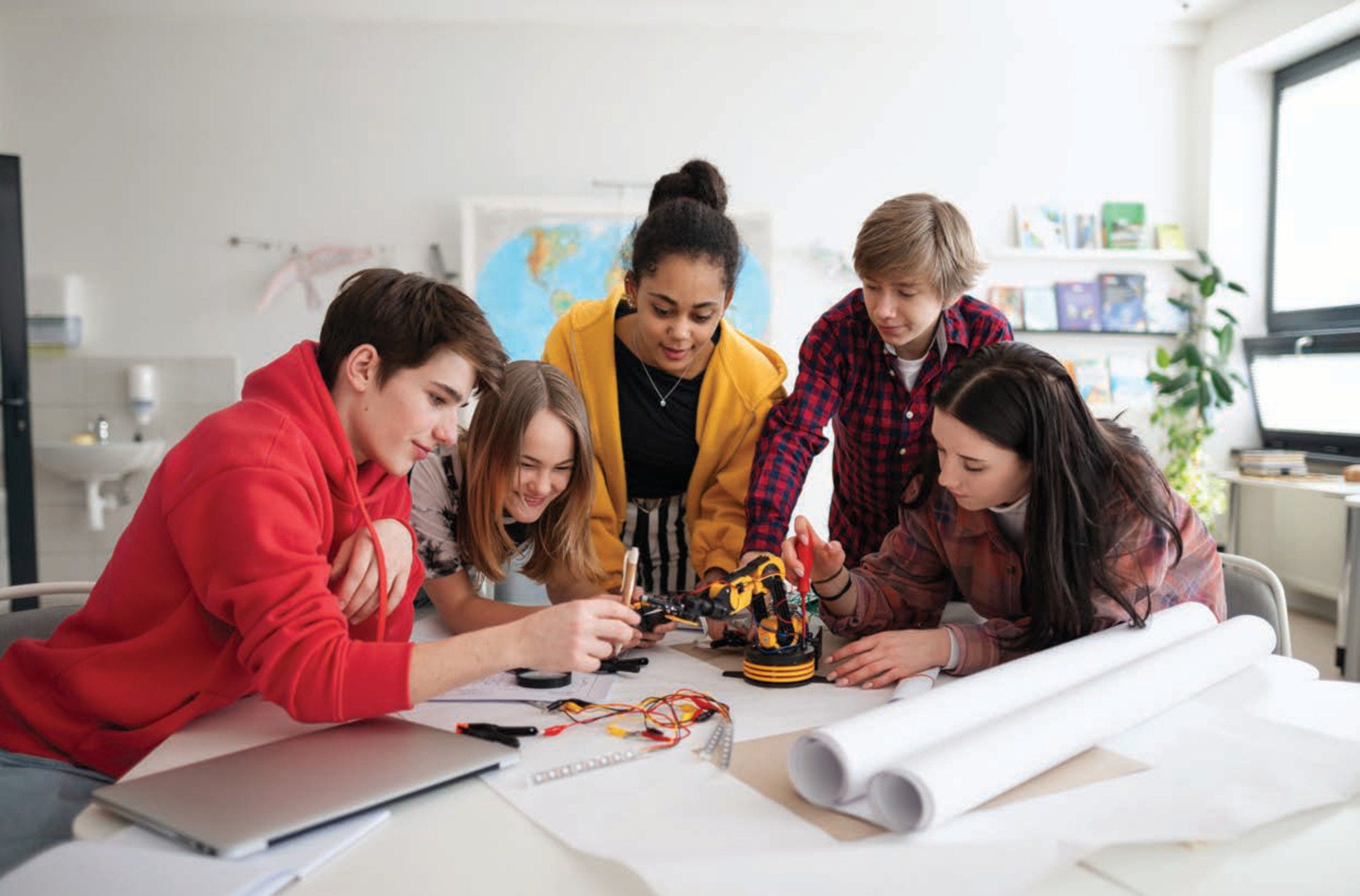A key barrier to the academic and socio-emotional well-being of students with an immigrant background is the lack of access to education and learning opportunities. Policies that specifically enable these students to attend school, at all levels of education, are particularly important. Once students with an immigrant background are enrolled in school, different policies can enable them to increase their capacity to attain positive outcomes despite having experienced adversity. Access to extra-curricular activities can make a further difference in helping immigrant students integrate better.
Students from migrant backgrounds
Many OECD countries have seen an increase in the number of immigrants and refugees entering their territories. Such population changes are naturally reflected in schools and classrooms. The increased mobility leads to questions about the fundamental design of today’s education systems, and the needs to foster tolerance and respect of others.

Key messages
Supporting students with an immigrant background in achieving high levels of socio-emotional well-being outcomes is a key driver to their integration in host communities. Examining different sets of vulnerabilities that accompany direct and indirect displacement, and the fact that they might affect students’ sense of themselves, is imperative. While education systems can and should play a role in promoting the overall well-being of immigrants, their role should be co-ordinated with health, social and welfare systems, and potentially involve partnerships among schools, hospitals, universities and community organisations.
A lack of fluency in host country languages is an important source of disadvantage that affects immigrant students’ academic performance and well-being. Language barriers can also amplify the effects of other sources of disadvantage. To this end, it is crucial to assess the language skills of students with an immigrant background and offer targeted language support. Language skills are not only important for academic achievement but are essential if students with an immigrant background are to develop a sense of belonging at school.
Context
On average across OECD, immigrant student populations remain stable
The percentage of immigrant students has remained stable in most PISA-participating countries since 2012. However, education systems vary in how large their immigrant student population is. 23 out of 40 countries (with more than 5% of immigrant students) show increases in their share of students with an immigrant background. In contrast, this share has only declined in five countries and never by more than nine points.
Change between 2012, 2015, 2018 and 2022 in the percentage of students with an immigrant background (2022)

Immigrant students are often less satisfied with their lives and feel like outsiders at school
Fewer immigrant students than non-immigrant students reported a value higher than 7 on a 10-point life-satisfaction scale. Similarly, immigrant students were more likely to report feeling like an outsider at school. On average, 64% of immigrant students reported that they are satisfied with their lives and 77% reported that they do not feel like an outsider at their school.
Students’ well-being and immigrant status (2018)

Related publications
Programmes and projects
-
Education for Inclusive Societies Project is designed to respond to the increasing diversity that characterises education systems, and seeks to help governments and relevant stakeholders achieve more equitable and inclusive education systems as a pillar to create more inclusive societies.Learn more
-
PISA is the OECD's Programme for International Student Assessment. PISA measures 15-year-olds’ ability to use their reading, mathematics and science knowledge and skills to meet real-life challenges.Learn more
-
The OECD Career Readiness project is designed to provide new advice to governments, schools, employers and other stakeholders on how to best prepare young people to compete in an ever-changing labour market.Learn more
-
The Early Childhood Education and Care (ECEC) programme conducts analysis and develops new data to support countries in reviewing and improving their early childhood services and systems.Learn more
-
The OECD’s programme on education and skills policy support policymakers in their efforts to achieve high-quality lifelong learning, which in turn contributes to personal development, sustainable economic growth, and social cohesion.Learn more
-
OECD Future of Education and Skills 2030 aims to build a common understanding of the knowledge, skills, attitudes and values students need in the 21st century.Learn more
-
The OECD Indicators of Education Systems (INES) programme seeks to gauge the performance of national education systems through internationally comparable data.Learn more
-
The Survey of Adult Skills, a product of the PIAAC, measures adults’ proficiency in literacy, numeracy and the ability to solve problems in technology-rich environments.Learn more
-
The PISA-based Test for Schools provides school-level estimates of performance and information about the learning environment and students’ attitudes gathered from student questionnaires. Find out more and how schools and their networks can take part.Learn more
-
Since 2013, the OECD has gathered evidence on how school resource policies work in different contexts. The focus is now on digital resources to enable countries to learn from each other in the digital transformation of their education.Learn more
-
The Starting Strong Teaching and Learning International Survey (TALIS Starting Strong) is an international, large-scale survey of staff and leaders in early childhood education and care (ECEC).Learn more
-
The OECD Survey on Social and Emotional Skills is an international survey that identifies and assesses the conditions and practices that foster or hinder the development of social and emotional skills for 10- and 15-year-old students.Learn more
-
TALIS - the Teaching and Learning International Survey - is the world's largest international survey about teachers and school leaders.Learn more
-
Preparing for the future means taking a careful look at how the world is changing. Reflecting on alternative futures helps anticipate and strategically plan for potential shocks and surprises.Learn more







